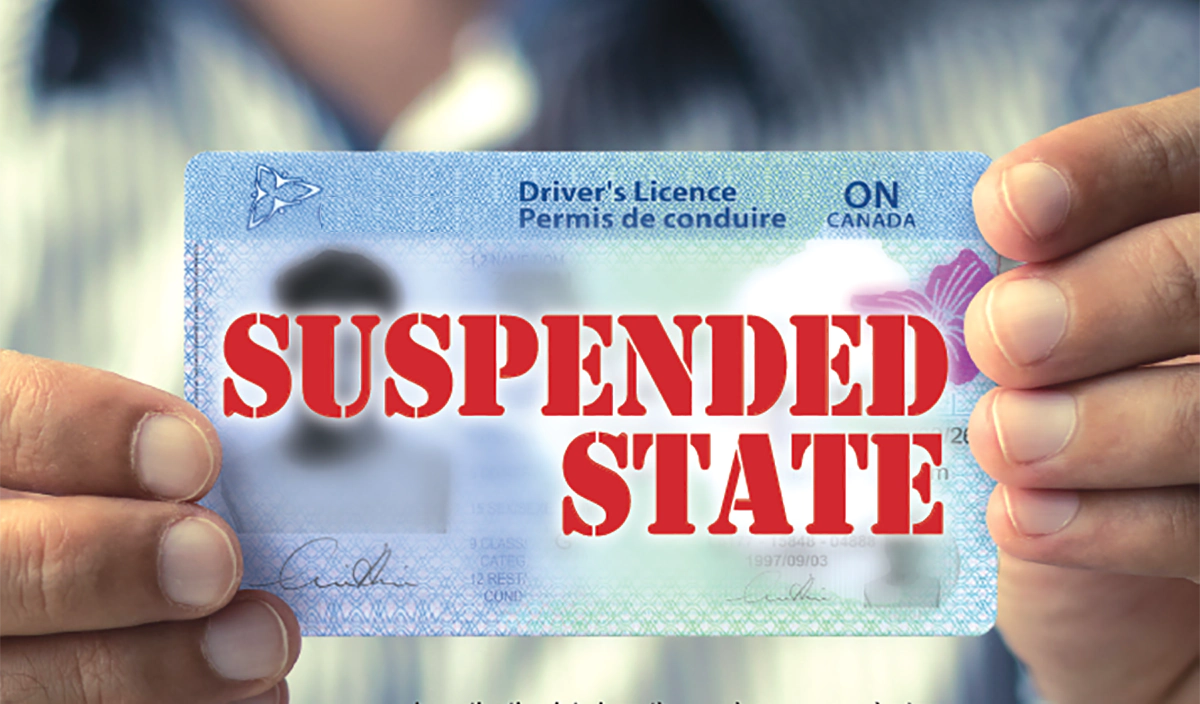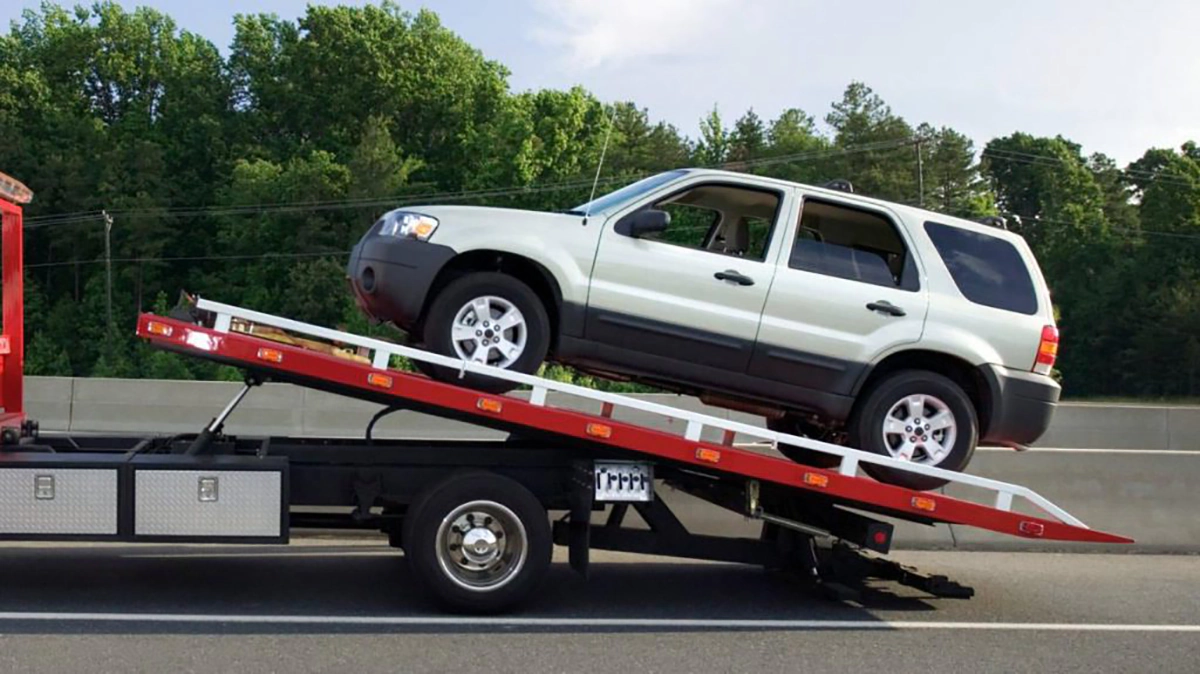In Canada, and particularly within the province of Ontario, the act of driving with a suspended license is regarded with utmost severity by law enforcement and the judicial system. The repercussions for such an act extend beyond immediate penalties and affect one’s financial and social standing. Understanding the gravity of this offence is essential for any driver facing suspension.
Suspensions
A driver’s license suspension is a temporary withdrawal of a person’s privilege to operate a vehicle, decreed either by the Ministry of Transportation or a court of law. This punitive measure is the consequence of a variety of infractions, from accumulating excessive demerit points to more grave offences such as driving under the influence (DUI).
Once a license is suspended, it is recorded within the Ministry’s database, accessible by law enforcement across the province. This means that any police officer can instantly verify the status of a driver’s license. The period of suspension can range from a few days to several years, based on the nature of the violation.
Different Types of License suspensions
Administrative Driver’s License Suspension (ADLS)
This type of suspension occurs when a driver is suspected of driving under the influence of alcohol or drugs. In Ontario, if a driver fails a roadside sobriety test or refuses to take one, an immediate ADLS can be imposed. The ADLS can range from 3 to 90 days, depending on the circumstances and the driver’s history.
Demerit Point Suspensions
Accumulating demerit points can lead to a license suspension. Young and new drivers must be especially cautious as they are allowed fewer points than experienced drivers before facing a suspension. Once the threshold is reached, the Ministry of Transportation may issue a suspension notice. The duration of the suspension typically correlates with the number of points accumulated and the driver’s history.
Defaulted Fine Suspension
Failing to pay fines related to the Highway Traffic Act or other provincial offences by the due date can result in a license suspension. This type of suspension remains in effect until the outstanding fines are paid in full, including any additional fees that may have accrued.
Medically Suspended Drivers License
When a driver’s medical condition is reported to the Ministry of Transportation as affecting their ability to drive safely, a medical review is initiated. If it is determined that the individual is unfit to drive, a license suspension is enforced until such a time that medical evidence is provided that indicates the driver can safely operate a vehicle.
Family Responsibility Office (FRO) Suspension
Under certain conditions, the FRO can request that a person’s driving privileges be suspended. This typically occurs when an individual fails to meet family support obligations, such as child or spousal support payments.
Court-Ordered Suspensions
The courts can order a suspension for a variety of reasons, including, but not limited to, criminal driving convictions like impaired driving or driving without insurance. The period of suspension ordered by the court depends on the gravity of the offense and the driver’s previous record.
Novice Driver Escalating Penalties
New drivers in Ontario, including those with G1, G2, M1, or M2 licenses, face stricter standards and penalties, including license suspensions for traffic violations that more experienced drivers may not face. This is part of the graduated licensing system, which aims to encourage safe driving habits from the onset of a driver’s experience.
Immediate Consequences For Driving On A Suspended License
Impoundment Of The Vehicle
The moment a driver is pulled over and discovered to be driving while under suspension, the officer on scene has the authority to remove the vehicle from the driver’s control. This process is not just a mere inconvenience; it serves as a lawful seizure of property, and the vehicle is impounded for a set duration. The length of impoundment and associated costs can create a substantial burden, regardless of whether the driver owns the vehicle or is borrowing it.
Fines And Penalties
The financial implications of driving with a suspended license are considerable. A first offence entails a mandatory fine that, as stipulated by Ontario’s Highway Traffic Act, is no less than $1,000 and can extend up to $5,000. Subsequent offences have fines that can double the minimum amount, presenting a significant financial burden. These stipulated fines are independent of any additional monetary penalties that may be levied by the court, which could include reimbursement of legal fees, impoundment costs, and the expense incurred for the reinstatement of the license.
Licence Suspensions
Upon conviction, drivers will face an automatic six-month suspension.
Your License May Be Canceled
Should an individual be apprehended for driving with a suspended license, the current suspension is not merely sustained; additional consequences may be applied, potentially resulting in the cancellation of the license. This action signifies the revocation of driving privileges, necessitating the individual to reapply and retest for a driver’s license once the suspension period has concluded and all reinstatement conditions have been met.
Increased Insurance Premiums
The repercussions of driving on a suspended license spill over into the cost of automobile insurance. Insurance providers reassess premiums based on risk profiles, and infractions such as driving under suspension significantly increase the perceived risk, leading to escalated premiums. Some drivers may even face the prospect of being uninsurable under standard policies, necessitating the pursuit of high-risk insurance at a premium rate.
Potential Incarceration
Arguably, one of the most significant impacts of being convicted for driving with a suspended license is the potential for incarceration of up to six months.
What Can You Drive With A Suspended License?
It must be emphasized that a suspension encompasses all motorized vehicles. This prohibition is not limited to just cars but extends to motorcycles, mopeds, and any other vehicle that requires a driver’s license for legal operation on public roads.
How Long Is My Driver License Suspended?
The duration of a suspension is not fixed and is determined based on the reason for the suspension. It could be as brief as 30 days for administrative reasons or indeterminate for more severe offences. The reinstatement of driving privileges is contingent on fulfilling specific conditions which vary case by case.
How To Get Back A Suspended Drivers License?
Check The Reason For The Suspension
Understanding why a license was suspended is pivotal in formulating a plan to have it reinstated. This will generally involve reviewing the suspension notice sent by the Ministry or court documents to ascertain the requirements for reinstatement.
Seek Legal Advice
Navigating the legal terrain to regain a suspended license can be complex and demanding. Professional guidance from a knowledgeable legal team is crucial in understanding one’s rights, the implications of the suspension, and the best course of action for reinstatement.
Restore The Rights
The path to reinstatement typically includes completing any mandated programs, settling outstanding fines, and undergoing any necessary testing. Only once all the terms set forth by the Ministry of Transportation or the courts have been satisfied can an individual’s driving privileges potentially be restored.
Conclusion
The consequences of driving with a suspended license in Ontario are multifaceted and enduring. They can affect one’s day-to-day life significantly, spanning legal complications, financial hardships, and social stigmas. Adherence to the terms of a suspension is imperative. For those requiring support, Traffic Paralegal Services provides comprehensive assistance in managing the complexities of such traffic violations. With a focus solely on traffic-related offences, individuals seeking paralegals for driving with a suspended license will find knowledgeable and diligent support to help navigate through these turbulent times. Legal expertise is invaluable in such situations, and engaging with a dedicated team can be the deciding factor in a successful resolution.









Leave A Comment
You must be logged in to post a comment.